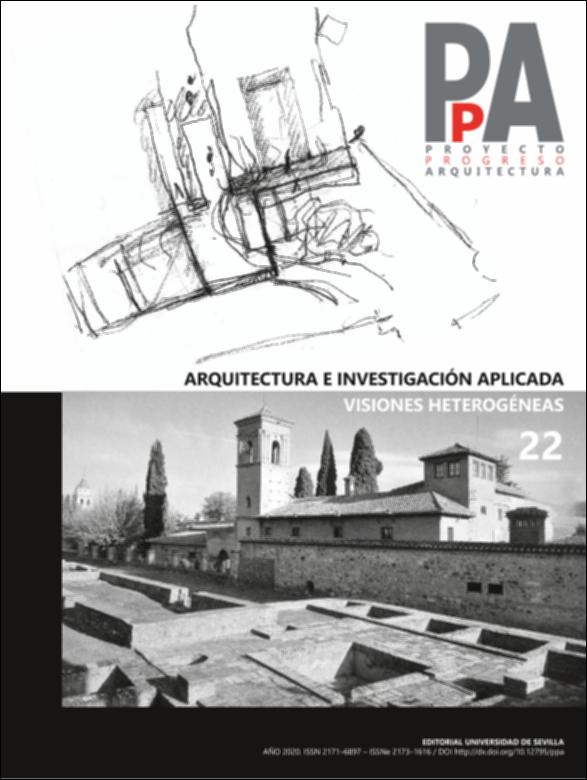Por favor, use este identificador para citar o enlazar este ítem:
http://hdl.handle.net/10637/15639Un centro de investigación para la construcción colectiva del medio ambiente mediante la tecnología: el Center for Advanced Visual Studies del MIT
| Título : | Un centro de investigación para la construcción colectiva del medio ambiente mediante la tecnología: el Center for Advanced Visual Studies del MIT A Research Centre for the Collective Construction of the Environment through Technology: the MIT Center for Advanced Visual Studies |
| Autor : | Lorenzo Cueva, Covadonga |
| Materias: | Arquitectura; Tecnología; Proyecto urbano; Kepes; Medio ambiente; Architecture; Technology; Urban project; Environment |
| Editorial : | Universidad de Sevilla |
| Citación : | Lorenzo Cueva, C. (2020). UN CENTRO DE INVESTIGACIÓN PARA LA CONSTRUCCIÓN COLECTIVA DEL MEDIO AMBIENTE MEDIANTE LA TECNOLOGÍA: EL CENTER FOR ADVANCED VISUAL STUDIES DEL MIT / A RESEARCH CENTRE FOR THE COLLECTIVE CONSTRUCTION OF THE ENVIRONMENT THROUGH TECHNOLOGY: THE MIT CENTER FOR ADVANCED VISUAL STUDIES. Proyecto, Progreso, Arquitectura, (22), 88–101. https://doi.org/10.12795/ppa.2020.i22.05 |
| Resumen : | Con motivo de la celebración del 150 aniversario de la Escuela de Arquitectura y Planeamiento Urbano del Massachusetts Institute of Technology (MIT), cuyos actos de conmemoración acaban de finalizar, el presente artículo plantea una revisión de algunas experiencias interesantes que tuvieron lugar tras la inauguración del Center for Advanced Visual Studies (CAVS) del MIT, un centro de investigación nacido a finales de los años sesenta, orientado a la realización de proyectos medioambientales que incorporaban nuevas tecnologías, gracias a la colaboración entre profesionales de distintas disciplinas. Fundado por György Kepes en 1968, quien ocupó la dirección del centro hasta el verano de 1974, el CAVS se creó con el objetivo de desarrollar investigaciones en el campo del arte, la arquitectura y el urbanismo que demostraran la viabilidad de las nuevas tecnologías de la información como herramienta de creación, y su aplicación en proyectos colaborativos de escala urbana que involucraban a la ciudadanía, buscando paliar el impacto ambiental producido por el rápido crecimiento de las ciudades modernas. Para ello, el artículo comienza centrándose en la figura de Kepes, impulsor de la iniciativa, destacando aquellas líneas de trabajo que desarrolló a lo largo de su trayectoria profesional, que influyeron directamente en su concepción del centro, y ofreciendo algunas referencias sobre el contexto en el que se funda el CAVS. A continuación, plantea el estudio de una selección de obras significativas realizadas por los primeros residentes que trabajaron directamente bajo la dirección de Kepes, con el fin de valorar su aportación al campo de la arquitectura y, más concretamente, a la construcción colectiva del medio ambiente mediante la tecnología. SUMMARY On the occasion of the celebration of the 150th anniversary of the School of Architecture and Planning of the Massachusetts Institute of Technology (MIT), whose commemorative events have just ended, this article presents a review of some interesting experiences that took place after the inauguration of the MIT Center for Advanced Visual Studies (CAVS), a research centre founded in the late sixties, aimed at carrying out environmental projects that incorporated new technologies, thanks to the collaboration among professionals from different fields. Founded in 1968 by György Kepes, who headed the centre until the summer of 1974, the CAVS was created with the aim of developing research in the field of Art, Architecture and Urban Planning, to prove the viability of information technology as a new creative tool, and its application in collaborative urban-scale projects involving citizens, seeking to mitigate the environmental impact produced by the rapid growth of modern cities. The article begins by focusing on the figure of Kepes, the promoter of the initiative, and highlights those lines of work that he developed, throughout his professional career, which directly influenced his conception of the centre and offers some references on the context in which he founded the CAVS. A study is also made of a selection of significant works carried out by the first fellows who worked under the direction of Kepes, in order to assess their contribution to the field of Architecture, and, more specifically, to the collective construction of the environment through technology. |
| URI : | http://hdl.handle.net/10637/15639 |
| Derechos: | http://creativecommons.org/licenses/by-nc-nd/4.0/deed.es OpenAccess |
| ISSN : | 2173–1616 |
| Fecha de publicación : | 1-may-2020 |
| Aparece en las colecciones: | Escuela de Politécnica Superior |
Los ítems de DSpace están protegidos por copyright, con todos los derechos reservados, a menos que se indique lo contrario.


